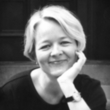Frog music: a novel
Description
From the New York Times bestselling author of Room, a young French burlesque dancer living in San Francisco is ready to risk anything in order to solve her friend’s murder—but only if the killer doesn’t get her first.
Summer of 1876: San Francisco is in the fierce grip of a record-breaking heat wave and a smallpox epidemic. Through the window of a railroad saloon, a young woman named Jenny Bonnet is shot dead.
The survivor, her friend Blanche Beunon, is a French burlesque dancer. Over the next three days, she will risk everything to bring Jenny's murderer to justice—if he doesn't track her down first. The story Blanche struggles to piece together is one of free-love bohemians, desperate paupers, and arrogant millionaires; of jealous men, icy women, and damaged children. It's the secret life of Jenny herself, a notorious character who breaks the law every morning by getting dressed: a charmer as slippery as the frogs she hunts.
In thrilling, cinematic style, Frog Music digs up a long-forgotten, never-solved crime. Full of songs that migrated across the world, Emma Donoghue's lyrical tale of love and bloodshed among lowlifes captures the pulse of a boomtown like no other.
"Her greatest achievement yet . . . Emma Donoghue shows more than range with Frog Music—she shows genius." —Darin Strauss, author of Half a Life.
More Details
031632468
9780316295192
9781478927068
9780316324663
Similar Titles From NoveList
Similar Authors From NoveList
Published Reviews
Booklist Review
*Starred Review* Donoghue flawlessly combines literary eloquence and vigorous plotting in her first full-fledged mystery, a work as original and multifaceted as its young murder victim. During the scorching summer of 1876, Jenny Bonnet, an enigmatic cross-dressing bicyclist who traps frogs for San Francisco's restaurants, meets her death in a railroad saloon on the city's outskirts. Exotic dancer Blanche Beunon, a French immigrant living in Chinatown, thinks she knows who shot her friend and why, but has no leverage to prove it and doesn't know if she herself was the intended target. A compulsive pleasure-seeker estranged from her fancy man, Blanche searches desperately for her missing son while pursuing justice for Jenny, but finds her two goals sit in conflict. In language spiced with musical interludes and raunchy French slang, Donoghue brings to teeming life the nasty, naughty side of this ethnically diverse metropolis, with its brothels, gaming halls, smallpox-infested boardinghouses, and rampant child abuse. Most of her seedy, damaged characters really lived, and she not only posits a clever solution to a historical crime that was never adequately solved but also crafts around Blanche and Jenny an engrossing and suspenseful tale about moral growth, unlikely friendship, and breaking free from the past.--Johnson, Sarah Copyright 2014 Booklist
Publisher's Weekly Review
Donoghue's first literary crime novel is a departure from her bestselling Room, but it's just as dark and just as gripping as the latter. Based on the circumstances surrounding the grizzly real-life murder of Jenny Bonnet, a law-flouting, pants-wearing frog catcher who lived in San Francisco in the mid-1870s, this investigation into who pulled the trigger is told in episodic flashbacks from the point of view of Blanche Beunon. Blanche is a raunchy, self-absorbed burlesque dancer and French emigre who befriended the alluring Bonnet and was with her on the night she was killed. Also woven into the plot is Blanche's sordid relationship with Albert Deneve, an ex-tightrope walker, and his minion Ernest, who may have had a hand in the murder while swindling Blanche out of house, home, and one-year-old baby. Aside from the obvious whodunit factor, the book is filled with period song lyrics and other historic details, expertly researched and flushed out. The sweltering heat wave and smallpox epidemic that afflicted thousands in 1876, the Sinophobic takedown of Chinese businesses, and the proliferation of baby farms-glorified dumping grounds for unwanted babies-are all integrated into the story of Bonnet's tragic end. Donoghue's signature talent for setting tone and mood elevates the book from common cliffhanger to a true chef d'oeuvre. (Apr.) (c) Copyright PWxyz, LLC. All rights reserved.
Library Journal Review
Clothes make the man, it's said, but don't tell that to Jenny Bonnet, the cross-dressing, frog-catching, gun-toting antiheroine of Donoghue's genre-defying new novel, set in late 1800s California. When the inimitable Jenny loses control of her high-wheel bicycle, riding smack into prostitute and exotic dancer Blanche Beunon, something extraordinary happens: Blanche discovers female friendship. Viewing her life through Jenny's lens, Blanche finds her fantasy world evaporating. Her lover Arthur Deneve, a gambler and a dandy, is nothing more than her pimp. And where, Blanche wonders, did he really take the little boy she gave birth to a year ago? Donoghue's evocative language invades the senses with the sights and smells of Chinatown, the frying food, boisterous saloons, even the sickrooms of victims of the smallpox epidemic. Readers won't quickly forget this rollicking, fast-paced novel, which is based on a true story and displays fine bits of humor with underlying themes of female autonomy and the right to own one's sexual identity. VERDICT A murder mystery, a feminist manifesto, and a human interest story, this will likely be compared to Donoghue's well-received Slammerkin, but it was her blockbuster, Room, soon to be a major motion picture, that made Donoghue a book group darling. Expect lots of requests. [See Prepub Alert, 10/4/13.]-Sally Bissell, Fort Myers, FL (c) Copyright 2014. Library Journals LLC, a wholly owned subsidiary of Media Source, Inc. No redistribution permitted.
Kirkus Book Review
In the sweltering fall of 1876, a San Francisco prostitute tracks a killer and searches for her stolen baby. Donoghue returns here to the historical fiction genre in which she first made her international mark (Slammerkin, 2000, etc.), but she's blended in the suspense craft she acquired writing her contemporary mega-seller Room (2010). Who fired the shotgun blasts that blew away Jenny Bonnet while her friend Blanche bent down to take off her boots? Blanche believes it was her lover Arthur or his sidekick, Ernest, who have been living on her earnings as a high-priced erotic dancer/whore. They weren't happy when Jenny goaded Blanche into retrieving her 1-year-old son, P'tit, from the ghastly holding pen for unwanted children where Arthur dumped him while Blanche was ill. And Jenny is killed while Blanche is hiding out in the countryside with her after an ugly scene with Arthur and Ernest that led Blanche to flee their apartment without P'tit. The men blame Jenny for Blanche's newfound, unwelcome independence, but there are plenty of other people in San Francisco who dislike the defiant, cross-dressing frog-catcher, who presents herself as an untamed free spirit. There's far more to Jenny's story, we learn, as Donoghue cuts between Blanche's hunt for her son in mid-September and the events of August, when her collision with bicycle-riding Jenny led to their unlikely friendship. By the time the murderer is revealed, we understand why Jenny knows so much about abandoned children, and we've seen how Blanche has been changed by her hesitant commitment to motherhood. (Some of the book's funniest, most touching moments depict her early struggles to care for "this terrible visitor," her baby.) Donoghue's vivid rendering of Gilded Age San Francisco is notable for her atmospheric use of popular songs and slang in Blanche's native French, but the book's emotional punch comes from its portrait of a woman growing into self-respect as she takes responsibility for the infant life she's created. More fine work from one of popular fiction's most talented practitioners.]] Copyright Kirkus Reviews, used with permission.
Booklist Reviews
*Starred Review* Donoghue flawlessly combines literary eloquence and vigorous plotting in her first full-fledged mystery, a work as original and multifaceted as its young murder victim. During the scorching summer of 1876, Jenny Bonnet, an enigmatic cross-dressing bicyclist who traps frogs for San Francisco's restaurants, meets her death in a railroad saloon on the city's outskirts. Exotic dancer Blanche Beunon, a French immigrant living in Chinatown, thinks she knows who shot her friend and why, but has no leverage to prove it and doesn't know if she herself was the intended target. A compulsive pleasure-seeker estranged from her "fancy man," Blanche searches desperately for her missing son while pursuing justice for Jenny, but finds her two goals sit in conflict. In language spiced with musical interludes and raunchy French slang, Donoghue brings to teeming life the nasty, naughty side of this ethnically diverse metropolis, with its brothels, gaming halls, smallpox-infested boardinghouses, and rampant child abuse. Most of her seedy, damaged characters really lived, and she not only posits a clever solution to a historical crime that was never adequately solved but also crafts around Blanche and Jenny an engrossing and suspenseful tale about moral growth, unlikely friendship, and breaking free from the past. Copyright 2014 Booklist Reviews.
Library Journal Reviews
Donoghue caught everyone's attention with Room, a visceral stunner that has sold more than 1.5 million copies and was a 2010 Man Booker Prize finalist. Her follow-up short story collection, Astray, demonstrated her uncanny ability to turn historical fact into affecting fiction. She'll doubtless do that again in this new novel, based on an unsolved murder in 1876 San Francisco. As the city is swept by smallpox and wrenching heat, Jenny Bonnet is shot to death through the window of a railroad saloon, and friend Blanche Beunon, a French burlesque dancer, meets the stuck-up wealthy, the desperately poor, and the determinedly bohemian as she searches of the killer. Not surprisingly, there's a 200,000-copy first printing and a ten-city tour.
[Page 66]. (c) Copyright 2013. Library Journals LLC, a wholly owned subsidiary of Media Source, Inc. No redistribution permitted.Library Journal Reviews
Clothes make the man, it's said, but don't tell that to Jenny Bonnet, the cross-dressing, frog-catching, gun-toting antiheroine of Donoghue's genre-defying new novel, set in late 1800s California. When the inimitable Jenny loses control of her high-wheel bicycle, riding smack into prostitute and exotic dancer Blanche Beunon, something extraordinary happens: Blanche discovers female friendship. Viewing her life through Jenny's lens, Blanche finds her fantasy world evaporating. Her lover Arthur Deneve, a gambler and a dandy, is nothing more than her pimp. And where, Blanche wonders, did he really take the little boy she gave birth to a year ago? Donoghue's evocative language invades the senses with the sights and smells of Chinatown, the frying food, boisterous saloons, even the sickrooms of victims of the smallpox epidemic. Readers won't quickly forget this rollicking, fast-paced novel, which is based on a true story and displays fine bits of humor with underlying themes of female autonomy and the right to own one's sexual identity. VERDICT A murder mystery, a feminist manifesto, and a human interest story, this will likely be compared to Donoghue's well-received Slammerkin, but it was her blockbuster, Room, soon to be a major motion picture, that made Donoghue a book group darling. Expect lots of requests. [See Prepub Alert, 10/4/13.]—Sally Bissell, Fort Myers, FL
[Page 94]. (c) Copyright 2013. Library Journals LLC, a wholly owned subsidiary of Media Source, Inc. No redistribution permitted.Publishers Weekly Reviews
Donoghue's first literary crime novel is a departure from her bestselling Room, but it's just as dark and just as gripping as the latter. Based on the circumstances surrounding the grizzly real-life murder of Jenny Bonnet, a law-flouting, pants-wearing frog catcher who lived in San Francisco in the mid-1870s, this investigation into who pulled the trigger is told in episodic flashbacks from the point of view of Blanche Beunon. Blanche is a raunchy, self-absorbed burlesque dancer and French émigré who befriended the alluring Bonnet and was with her on the night she was killed. Also woven into the plot is Blanche's sordid relationship with Albert Deneve, an ex–tightrope walker, and his minion Ernest, who may have had a hand in the murder while swindling Blanche out of house, home, and one-year-old baby. Aside from the obvious whodunit factor, the book is filled with period song lyrics and other historic details, expertly researched and flushed out. The sweltering heat wave and smallpox epidemic that afflicted thousands in 1876, the Sinophobic takedown of Chinese businesses, and the proliferation of baby farms—glorified dumping grounds for unwanted babies—are all integrated into the story of Bonnet's tragic end. Donoghue's signature talent for setting tone and mood elevates the book from common cliffhanger to a true chef d'oeuvre. (Apr.)
[Page ]. Copyright 2013 PWxyz LLC




























